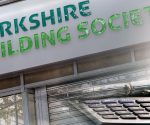Tax hikes ‘will likely foot the bill’ as Covid costs rise but self-employed prospects rise | Personal Finance | Finance
[ad_1]
Self-employed workers were hit hard by coronavirus in 2020, and Rishi Sunak was critised by many for providing delayed support to the industry. SEISS and furlough have kept millions afloat but it remains to be seen how the economy will cope when the Government ends its support.
Self-employed data was examined today as the ONS released its latest Labour Market figures to March 2021.
The data showed the number of UK self-employed increased slightly from 4,313,000 in January to 4,331,000 in February, although this is still 617,000 lower than what it was at the same time last year.
In responding to these results, the Association of Independent Professionals and the Self-Employed (IPSE) noted the month-on-month increase was a “cause for cautious optimism” as the economy opens up.
This optimism tallied in with recent insight from IPSE, with its own data showing a quarter of freelancers’ businesses (24 percent) have returned to pre-pandemic levels, while nearly a third (29 percent) believed the easing of restrictions this week would also give an added boost to their businesses.
READ MORE: Pension warning: The Governments ‘policymaking’ is costing retirees
“Although the year-on-year drop is testament to the drastic financial damage of the pandemic, the monthly increase – taken with our data on rising business performance – gives us hope that the freelance sector is on its way back.
“Freelancers are the leading edge of the economy and have always played a key part in economic recovery.
“To fully unleash this potential, however, the Government must do more to support the sector. “Many excluded freelancers are now struggling under enormous amounts of debt, and the Government should consider ways to relieve this.
“Meanwhile, the IR35 changes have left many contractors trying to navigate the near-unregulated world of umbrella companies: the Government must step in to support them and underpin the continued recovery of the sector.”
Myron Jobson, a Personal Finance Campaigner at interactive investor, also commented on the ONS data, while warning on what may lie ahead: “Things are looking up in the labour market.
“The surprise fall in unemployment for the first three months of the year to 4.8 percent, up 0.8 percentage point from the pre-pandemic level, is the clearest indication yet that the furlough scheme has done its job of helping people stay in employment during the coronavirus lockdown.
“This is good news, and the best may be yet to come providing new variants of Covid-19 do not scupper the roadmap to the safe and full reopening of society.
“The elephant in the room is the cost of the furlough scheme. It will be high, there is no getting away from it, and taxpayers will likely foot the bill – through tax hikes and potential spending cuts. But for now, signs of recovery in the labour market are welcome rays of light as the UK emerges from a dark period from both an economic and humanitarian standpoint.”
Similar sentiment was shared by Douglas Grant, a Director at Conister, who warned employees may also struggle as their employers lose access to Government funding: “The fall in the UK unemployment level follows positive data last week on the rise in UK GDP for March, falling in line with what we’d expect as restrictions are lifted and the economy reopens.
“However, we must remember that the number of workers on payrolls still remains significantly lower than before the pandemic and the UK’s SME debt burden is still ballooning. We are in serious danger of seeing a relentless flow of weak zombie-like companies falling off a loan default cliff.
“By the end of this year, it is expected that companies will have borrowed more than £60 billion to help them to survive the pandemic, according to the EY Item Club, and bank lending to businesses, including through the government schemes, could also increase by 5.4, equating to an extra £26billion net of repayments. It is imperative that we avoid compounding this cycle by focussing solely on supporting sectors and businesses that are resilient and agile enough to adapt to the new economy.
“We believe the introduction of the recovery loan scheme (RLS) will certainly help. We are pleased to see the Government look beyond the initial triage phase and instead identify, prioritise and protect our most resilient individual business sectors and segments. However we must also acknowledge that default rates across the country will increase significantly over the next three to six months and unfortunately there is more pain to come. Demand for appropriate debt collection and management services for SMEs will grow as the business sector recovers from the damage caused by the pandemic. “
[ad_2]
Source link










